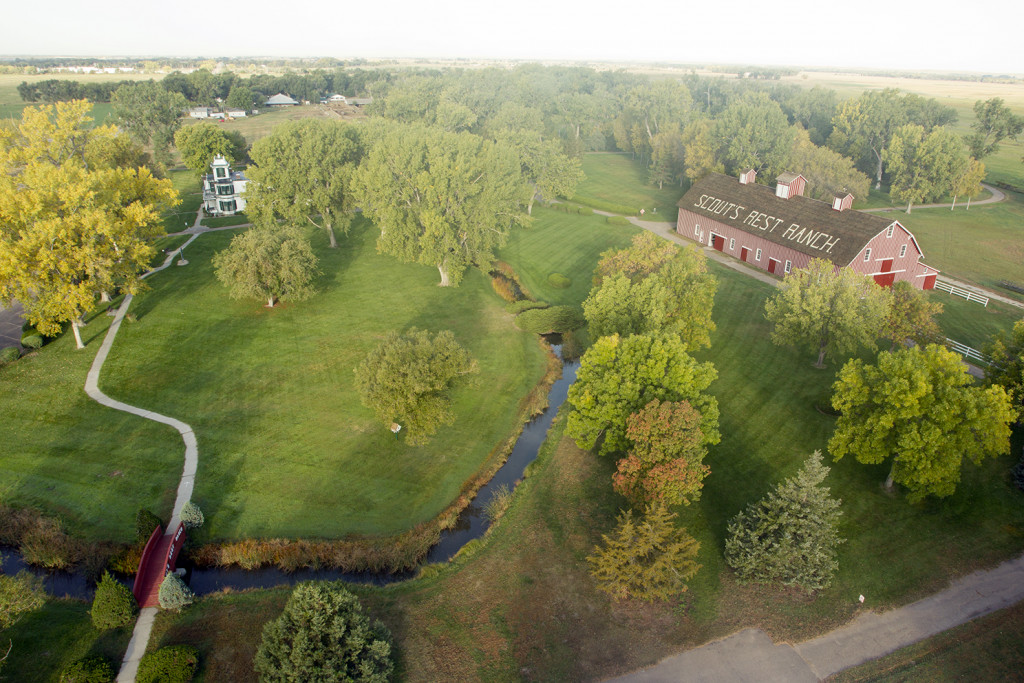
LINCOLN, Neb. — Scout’s Rest Ranch at Buffalo Bill Ranch State Historical Park has been designated a National Historic Landmark, for the significant role William F. “Buffalo Bill” Cody played in the creation of the Wild West entertainment movement of the late 19th century.
About 8.25 acres of Cody’s former ranch property in North Platte — including the mansion, barn, outbuildings, irrigation system, windmill and landscaped lawns — earned the designation on Jan. 13. National Historic Landmarks are determined by the U.S. Secretary of the Interior to be nationally significant to American history and culture.
“This national recognition is a great honor for Buffalo Bill Ranch State Historical Park, and it reinforces the significance of Buffalo Bill and his influence on how we understand the American West — something Nebraskans have always known and taken pride in,” said Bob Hanover, Nebraska Game and Parks historical parks administrator.
This achievement coincides with the centennial year of the Nebraska Game and Parks Commission state park system, and an event to celebrate the Scout’s Rest Ranch designation is being planned for later this year.
Scout’s Rest Ranch was the primary home of the frontiersman-turned-showman from 1886 to 1913. In the late 1800s, Cody developed a series of “Wild West” vaudeville shows that incorporated rodeo performances and re-enactments of historical events of the American frontier. The ranch was a powerful piece of publicity and propaganda in the show as it illustrated how Cody carried out his role as frontiersman and domesticator, not just in the arena, but in his private life.
Buffalo Bill’s Wild West was so compelling, it inspired more than 100 imitator shows, spawned the modern rodeo, and influenced the motion picture industry. The movement influenced — and continues to influence — how the entertainment industry, mass media, and popular culture present the history of the American West.
The ranch in west-central Nebraska at one time covered nearly 4,000 acres of prairie and supported cattle. Cody dubbed his slice of Nebraska as “Scout’s Rest,” a name that reflected his career as a civilian scout for the military and his vision of the ranch as a retreat where he could relax and plan for his vast entertainment empire.
Cody also conducted Wild West business at Scout’s Rest Ranch, including purchasing, training, and stabling horses; signing contracts for new performers; and allowing the use of the ranch for performers to rehearse.
The ranch, part of the 25-acre Buffalo Bill Ranch State Historical Park, is open to guests year-round, and the house and barn can be toured from late spring to early fall. In the future, the property will display a bronze plaque provided by the National Park Service that memorializes its status as a National Historic Landmark.
“With approximately 2,600 National Historic Landmarks, Scout’s Rest now joins a distinguished group of nationally significant properties that represent the most important chapters of our nation’s history,” said Astrid Liverman, of the National Park Service. “It was an honor to work with the Scout’s Rest Ranch team on the designation of this very special place.”
A permit is required to enter Buffalo Bill Ranch State Historical Park or the adjacent Buffalo Bill Ranch State Recreation Area. To learn more about the ranch, visit outdoornebraska.org/buffalobillranch. To learn more about National Historic Landmarks, visit nps.gov.
###
The National Park Service contributed to this release.
 Nebraskaland Magazine
Nebraskaland Magazine

